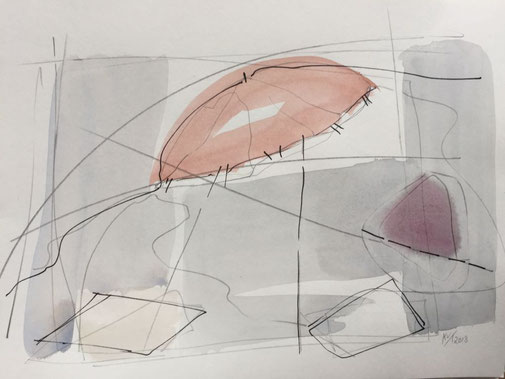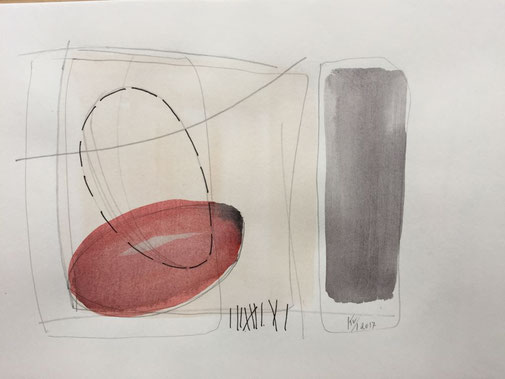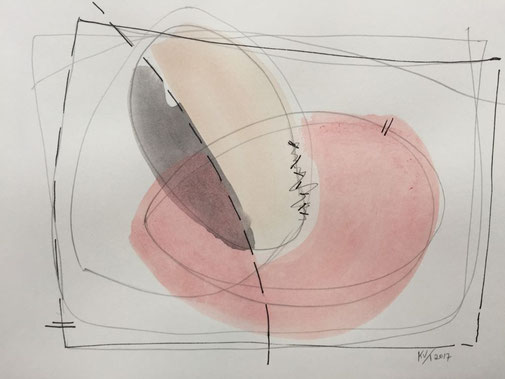The Line 1
Before we learn to write we are able to draw and paint. What came first? Daubing patches of colour or tracing a line?
Let us focus on the line. In early civilisations, objects like bones, quills, twigs or stones were used as an extension of the hand and enabled the artist to outline a form. Modern tools include graphite pencils and various types of pen, with ball points, nibs or felt tips that all allow for very precise draftsmanship, whereby the older, improvised tools have regained popularity for abstract work.
Often, the mere rhythm of a partial outline or impulsive scribble is enough to suggest a familiar form. And it is fascinating that the eye not only registers the line or composition of lines but almost simultaneously translates it into an image. Even more extraordinary is that the very simplest of drawings, whether abstract or realistic, evokes mood and emotion, it is a messenger of thoughts and imaginations. Drawing is like writing without words.
The Line 2
Enter "The Line" or "Line" or "La ligne" in your search engine: irrespective of language, the first entry is the ongoing Saudi-Arabian urban development, envisaged
to be 170 km long but only 500 metres wide (a line, of course).
But from here on the searches yield results far removed from graphics and art. First are companies called Line or La Ligne. Then "Linie" (German) will lead you to various public transport maps, "line" (English, without the article) to a messenger app of the same name, "Ligne" (French, without the article) figures on a German(!) website as the tributary of the Ardèche in France, or, in a French language search, to the French railway network, closely followed by Ligne Roset furniture and interior design.
In the analogue Oxford Concise Dictionary on my bookshelf the definition of "line" as a graphic element ranks sixth on the list of definitions.
My next attempt was "What is a line?" which took me to geometry, and this definition of a line: "A line has kength but no width...It is infinite and has no ends on both sides. A line is one-dimensional." (https://www.cuemath.com)
Intriguing the defintion on another site: "A line is defined as a straight curve." (https://math.info)
To obtain a defintion of something made by a pen or pencil you have to put in the specific phrase "the line in art", where is is almost always defined as one of the basic elements of drawing, follwed by further descriptions of types of line: horizontal, vertical, diagonal, zig-zag and curved. One site lists 30 different types of lines and states that they are "Dynamic tools that carry multiple meanings and intentions". (https://debasreedeyart.com)
Priority placement in the web reveals the mechanisms of algorithms. Prestige and business rank first, followed by product placement, technology and mathematics. Only a specific search yields the connection to pictorial representation and the birth of writing.



